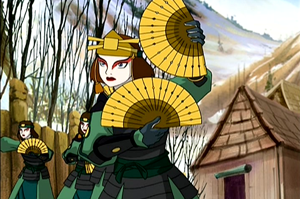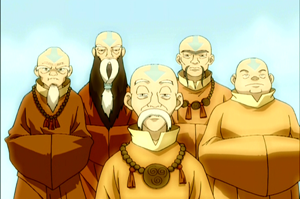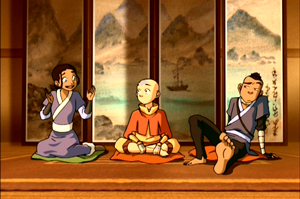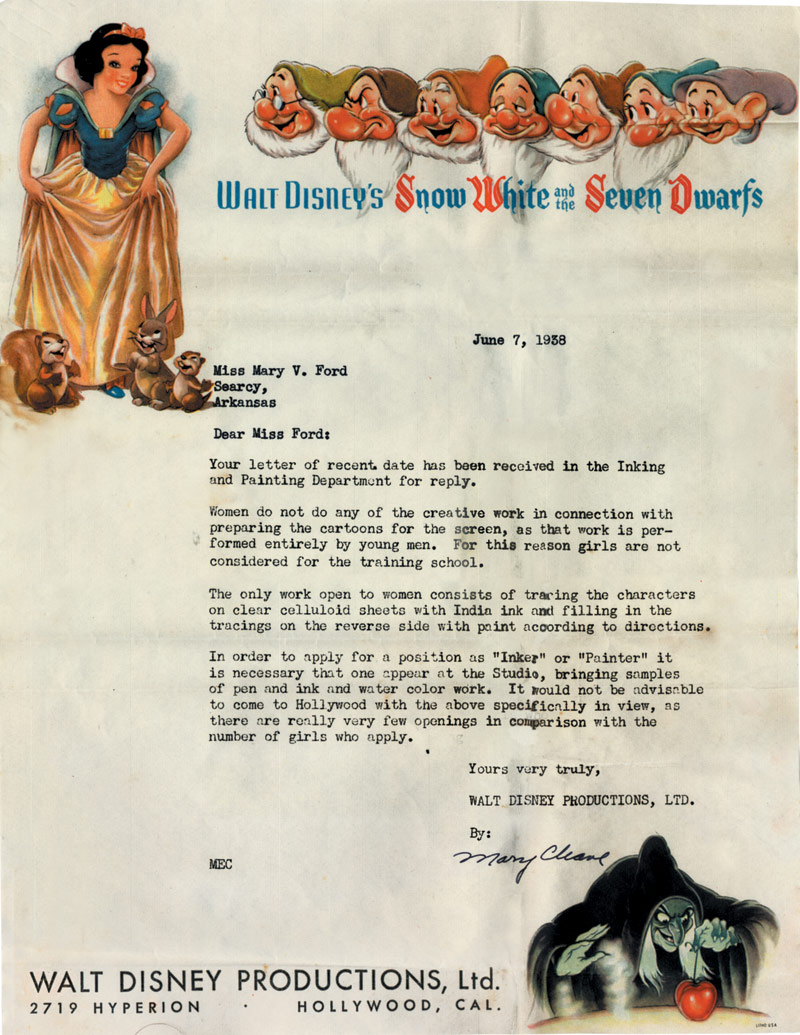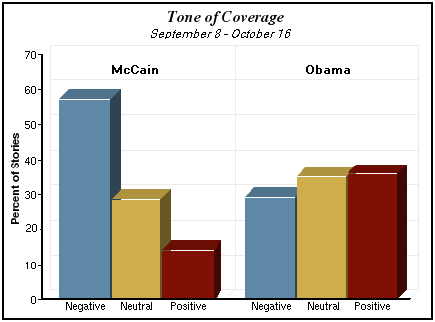Matt S. has pointed us to the controversy over the casting of The Last Airbender (to be released 2010). One blogger, comic book artists Derek Kirk Kim, describes the Nickelodeon cartoon series on which the life-action movie is based as follows:
[The cartoon is] wholly and inarguably built around Asian (and Inuit) culture. Everything from to the costume designs, to the written language, to the landscapes, to martial arts, to philosophy, to spirituality, to eating utensils!—it’s all an evocative, but thinly veiled, re-imagining of ancient Asia. (In one episode, a region is shown where everyone is garbed in Korean hanboks—traditional Korean clothing—the design of which wasn’t even altered at all.) It would take a willful disregard of the show’s intentions and origins to think this wouldn’t extend to the race of the characters as well.
The series–which I have never seen–does indeed seem to be inspired by various Asian cultures. Here are some images from the cartoon series (from the same blog post):
The controversy is regarding the casting of the lead characters. All four leads are white (imdb).
Jackson Rathbone (image at imdb):
Jesse McCartney (image here):
Nicola Peltz (image here):
I couldn’t find a picture of the fourth lead, Noah Ringer.
Kim quotes Gene Yang saying:
It’s like a white Asian fetishist’s wet dream. All the Asian culture they want, without any of the Asian people.
Ampersand, at Alas a Blog, puts it nicely:
…the best roles for people of color are reserved for actors who appear white — and the best roles for white people are also reserved for actors who appear white.

